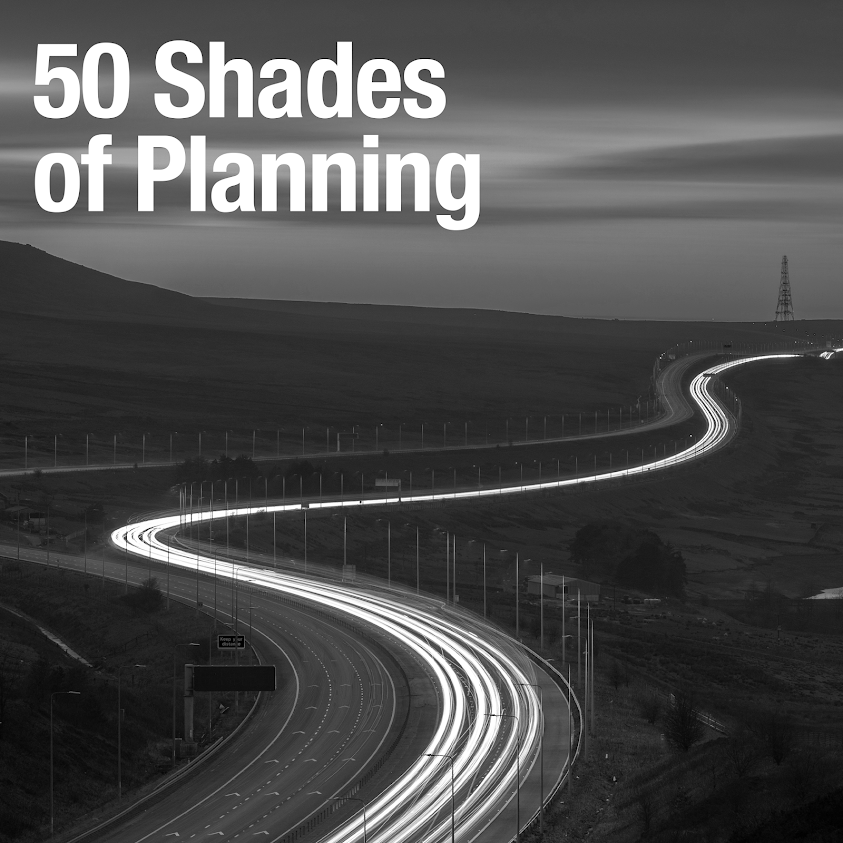Steve Morgan, Chairman of Redrow, spoke to BBC Radio 4's Today programme yesterday (from 1h19m here) about the company's record results. When asked why the company was not building more homes Mr Morgan (who has not been shy about sharing his views on the planning system in the past...) highlighted the 'challenge' of getting from an outline permission to an implementable permission.
This reminded me of the current 'technical consultation on planning', which includes the introduction of "deemed discharge" for planning conditions where an LPA has not made a decision within a reasonable time period.
Whilst described as a 'nuclear option' when first mooted back in January, this is actually quite a sensible way of reminding LPAs that the issuing of a decision notice does not constitute the end of the application process. Given though the work required between the granting of an outline consent and work starting on site, the deemed discharge of conditions, like much of the Coalition's activity, constitutes a tinkering around the edges rather than real reform.
The planning system alone cannot be responsible for the construction of the amount of new homes the country requires, but it does need to provide the wider development system with the land to do so. The NPPF (which as Mr Morgan points out was largely a consolidation and rebalancing exercise rather than fundamental reform) may have played a role in LPAs making 8% more residential decisions in the year ending March 2014 compared to the previous year (with major residential decisions up by 31%), but, as Mr Morgan points out (I can find no empirical evidence to support his assertion, but do share it) the majority of new permissions are in outline, which means that there are still several hoops for builders to jump through before a spade can be put in the ground.
So. Enough tinkering. Let's talk about real reform. The obvious solution, to me at least, is the preperation of local development orders (LDOs) as soon as preferred allocations in local plan document are identified so that they can be made as soon as practicably possible upon the document's adoption. The Government has been pushing the use of LDOs recently (see here and here), but housing and planning minister Brandon Lewis has made clear that this was to protect the countryside from building (here). With the general election out of the way next year and with ministers perhaps more willing to acknowledge publicly that greenfield sites need to be developed, the conjoining of LDO and local plan processes for both major green and brownfield sites has the potential to expedite the planning process significantly.
If the possibility of sensible condition reform represented a 'nuclear planning option' then one can imagine the reaction of The Telegraph et al to allowing development without planning permission so let us anticipate the inevitable relaunching of the 'Hands Of Our Land' campaign...
'You're riding roughshod over the wishes of local people!' No. A LDO would be linked to the formal adoption of a strategic allocation, which would have been subject to the usual local plan process.
'We'd have no control over what development looks like!' No. A design code would be a condition of the LDO.
'Developers would be able to get away without making financial contributions!'. No Section 106 planning obligations cannot be required under a LDO, but this does not prevent section 106 agreements being offered. For example, if a condition attached to a LDO requires mitigation of an impact from development then a section 106 agreement could be used to secure this. Further, development carried out under a LDO may be liable to pay a CIL charge where one applies (and every LPA will have adopted a charging schedule next year...).
I would actually contend that a consolidated local plan and LDO process would not only expedite development, but might also result in better development. Consider
two hypothetical strategic sites on the edge of a hypothetical town, both promoted through the local plan process and both ultimately adopted. Site A has been supported by a design code and masterplan
framework, as well as technical material to support deliverability,
which have been endorsed by an inspector at an EIP. Site B has been
passively promoted by a landowner until the point preferred status was
confirmed, whereupon an outline application was submitted. Site A, developed in accordance with the design code and masterplan
framework, is likely to create a better development than Site B, which will be brought forward through piecemeal reserved matters submission.
The leap between the promotion of Site A, above, and a consolidated local plan and LDO process is not actually a great one. A lot of design and technical work is undertaken during the local plan process to demonstrate suitability, availability and achievability and this work, more often than not, is simply resubmitted in order to then go through the planning application process. The Telegraph would have to find a threat level above nuclear in order to cover the story, but in this context LDOs for strategic allocations are as sensible a measure as the deemed discharge of conditions.

Comments
Post a Comment